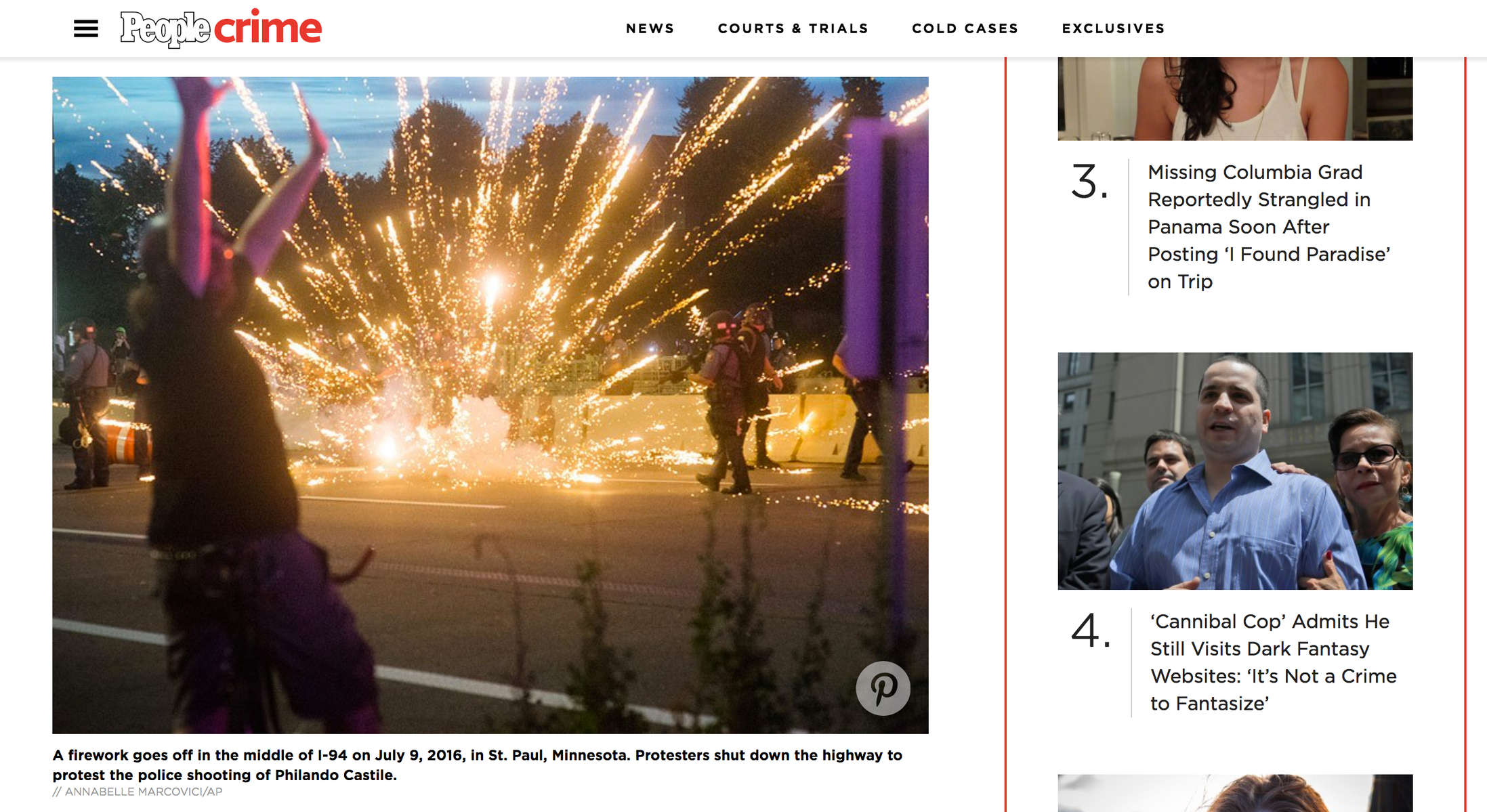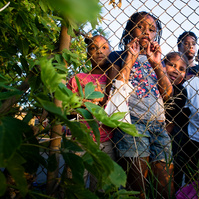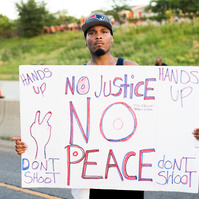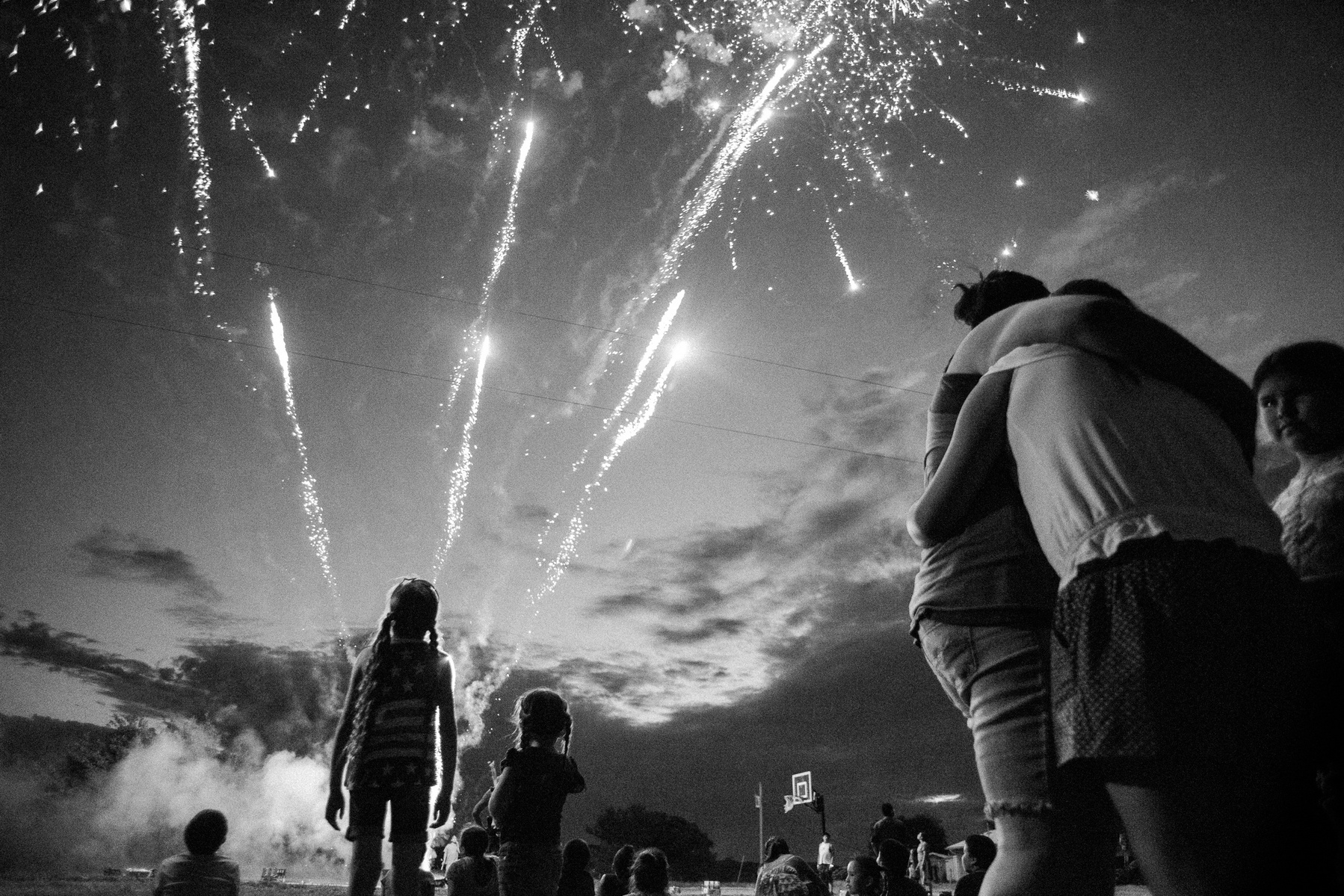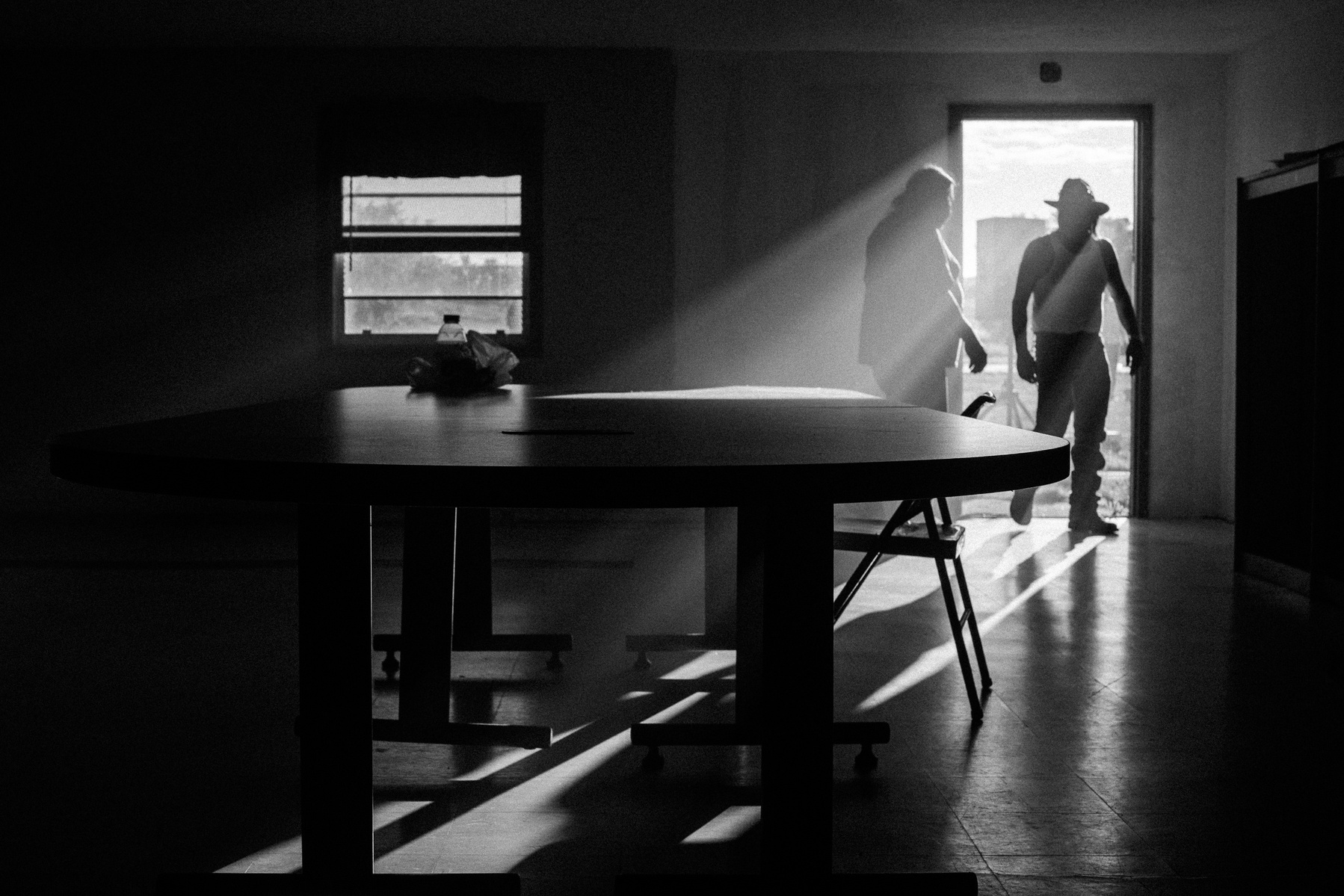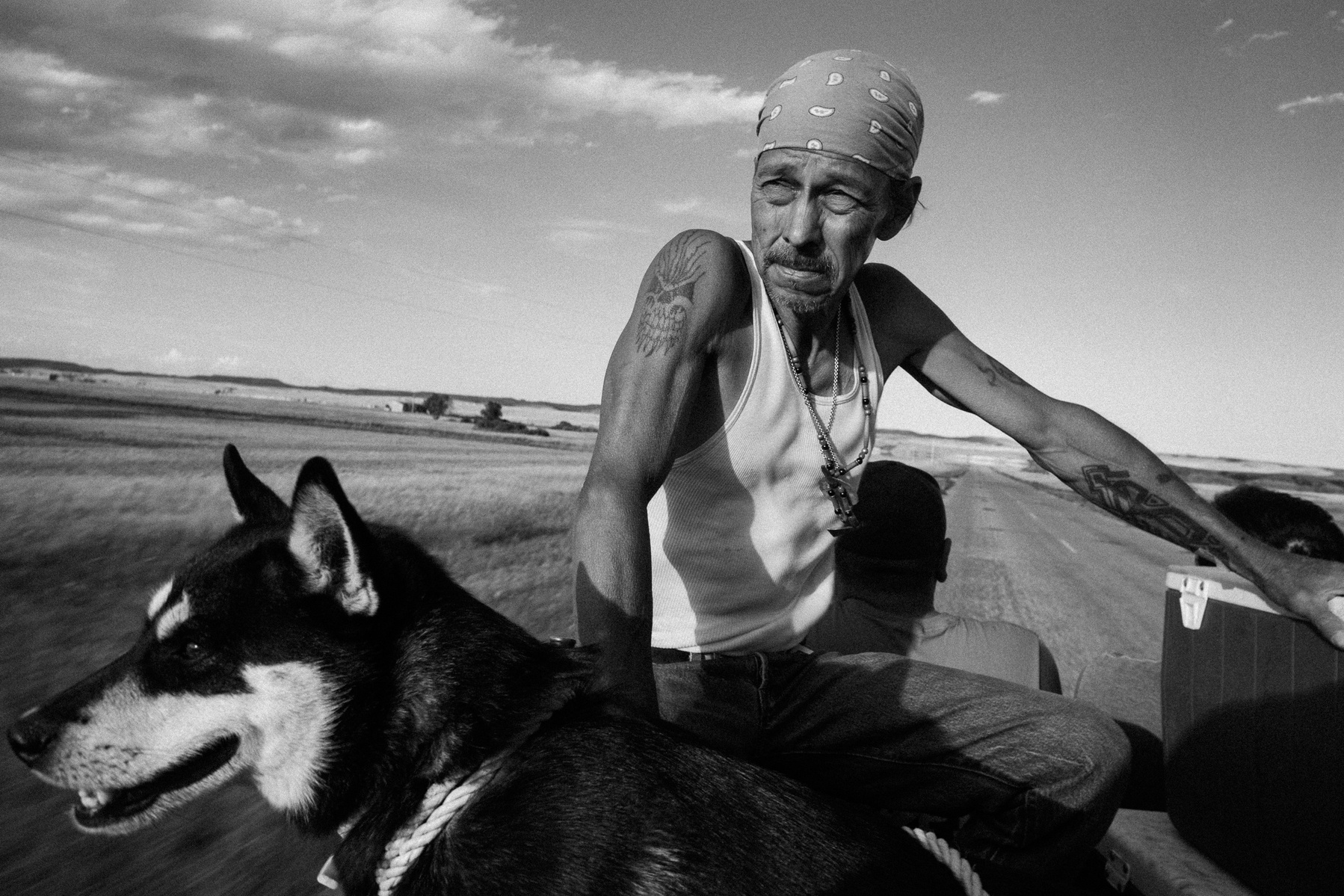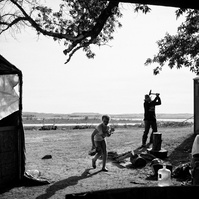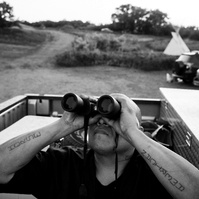A few days ago People published a couple of my photos from the I-94 shutdown, which protested the unjust police killing of Philando Castile.
I’m disappointed that People spent most of the first half of the article effectively providing free PR for the St. Paul police. Having witnessed (and obviously photographed) it firsthand, I can say confidently that it was not a “full-scale riot” as the St. Paul city attorney described. For an accurate account of the protest, please see this Unicorn Riot post.
The police did not so much as flinch when this or other fireworks went off near them. In fact, they did not seem to react at all except to look back at it. Makes you wonder.
On July 9th, Black Lives Matter protesters shut down Interstate 94 in Saint Paul to protest the police murder of Philando Castile.
WIRED published one of my photos from the shutdown on a piece about the power of photography in the Black Lives Matter movement. The American Prospect published another one here. You can see the rest of the photos below:
“Be a officer? You WICKED overseer! Ya hotshot, wanna get props and be a savior First show a little respect, change your behavior Change your attitude, change your plan There could never really be justice on stolen land”
–Sound of the Police, KRS-ONE
The ride back to Minneapolis from the Sacred Stone Spirit Camp took forever. Eight hours in a car is a lot under normal circumstances, but when eight hours stand between you and your grieving community, between you and your loved ones who have dropped everything to stand together, time crawls.
I was traveling from one crime scene to another. From Cannon Ball, ND, where the Dakota Access Pipeline is on the brink of ravaging Native land, water, sovereignty, and sacred sites, where once again brown people are being treated as disposable nuisances, to the Twin Cities, which is mourning yet another black man murdered by cops.
If you’re not familiar with the camp or the pipeline, please see the camp website to get the rundown.
If you’re not familiar with Philando Castile’s murder, read this article.
The morning I left camp, pipeline construction crews seemed more active than they had been for weeks. It wasn’t clear from our binocular-enhanced view across the Missouri River to the construction site whether Dakota Access LLC had begun passing the pipeline through Army Corps land, which they don’t currently have authorization to do. But some people were saying that they appeared to have crossed that boundary.
When the camp sent me across the river to take photos and potentially find out more about the company’s activities, I noticed something very interesting about the construction vehicles.
At least three of them were flying Confederate Flags.
We could shame the workers who chose to display the flags, but let’s focus instead on the fact that the company is okay with this. Energy Transfer Partners, L.P. has Confederate Flags proudly flying from the machines they’re using to pillage Native American land.
Yeah.
The display should come as no surprise to any student of American history. It’s a reminder that manifest destiny–the 19th century belief that white settlers have the God-given right to conquer North America–is alive and well in 2016. As in the 1800s, the white man’s right to property and limitless prosperity is treated by the government, industry, and mainstream society as more important than anything else. And by “anything else,” I mostly mean the rights, wellbeing, and sovereignty of Native Americans and other oppressed peoples.
“[Native Americans’] disappearance from the human family would be no great loss to the world.”–Henry Clay, 1825
While the Confederate Flag doesn’t directly symbolize manifest destiny, it stands for the same white supremacist ideology that holds white property rights and “freedom” above all else. It does celebrate American history, as apologists claim: a history where white slave-owners fought for their rights to own and abuse black slaves.
The flag’s message is clear: white people should be able to step on non-whites in the name of their own prosperity, and to hell with the rest of you.
The Confederate Flags on those construction vehicles reveal the connections between Philando Castile’s murder and the Dakota Access Pipeline. Both continue a long legacy of American institutions oppressing people of color to protect white property and class power.
The police began as a force to protect those privileges through violent means, and they continue that function to this day. They “were not created to protect and serve the population…They were created to protect the new form of wage-labor capitalism that emerged in the mid to late nineteenth century from the threat posed by that system’s offspring, the working class.” -Sam Mitrani, Associate Professor of History at the College of DuPage
I encourage you to read the whole article that quote is from because it does a better job summarizing the racist history of policing in America than I could. Studying this history is essential to understanding why the police continue to brutalize black people and other people of color with impunity and face virtually no consequences. No meaningful progress can happen without that awareness.
As MN Neighborhoods Organizing for Change recently posted on their Facebook timeline, “Our goal is no longer the prosecution of the police. Our goal is the abolition of the police state.”
I agree with NOC, but with one qualification: my goal is the abolition of the economic system that created the police state and requires state violence to function.
We cannot stand aside while corporations play out manifest destiny 2.0 on Native land in and outside the US. We cannot pour our hope and energy into minor reforms like body cameras and weak energy regulations that don’t change the fundamental structure of our economy, government, and society. This country’s racist history has evolved into its racist present, and will continue to evolve unless racial and economic power dynamics fundamentally shift.
On the outer edge of the Standing Rock Indian Reservation in Cannon Ball, North Dakota, a small group of tents and teepees sits nestled against the Missouri River. The encampment, which three months ago could have been mistaken for a family camping trip, has grown into a functional living space for the protesters who occupy it.
Iŋyaŋ Wakháŋagapi Othí, AKA The Camp of the Sacred Stones, began April 1st, 2016 to protest the Dakota Access Pipeline (DAPL) currently being built along the opposite bank of the Missouri River. To quote the Camp’s website,
“The Dakota Access Pipeline (DAPL), owned by Houston, Texas based corporation called Energy Transfer Partners, L.P. which created the subsidary Dakota Access LLC. The DAPL, also known as the Bakken Pipeline, is proposed to transport 450,000 barrels of crude oil per day (which is fracked and highy volatile) from the Bakken fields of North Dakota to Patoka, Illinois.
Despite pressure from the U.S. Environmental Protection Agency (EPA), the U.S. Department of Interior (DOI) and the Advisory Council on Historic Preservation, Dakota Access has failed to consult tribes and conduct a full environmental impact statement. The proposed route crosses the Missouri River at the confluence with the Cannon Ball river, and area that is of utmost cultural and spiritual, and environmental significance. The confluence an important location for the Mandan origin story as the place where they came into the world after the great flood. Where the two waters meet once created Iŋyaŋ Wakháŋagapi Othí, spherical Sacred Stones (thus the colonizers’ term ‘Cannon Ball’), but after the Army Corp of Engineers dredged and flooded the rivers in the 50s, the flow has changed and Sacred Stones are no longer produced. There are historic burial grounds, village grounds and Sundance sites that would be directly impacted. The water of the Missouri River is essential to life on the Standing Rock Reservation as well as all of the nations and states downstream.
The threats this pipeline poses to the environment, human health and human rights are the same as those that were posed by the Keystone XL. The current route of the DAPL will cross over the Ogallala Aquifer (one of the largest aquifers in the world) and under the Missouri River twice (the longest river in the United States). The possible contamination of these water sources makes the Dakota Access pipeline a national threat.”
I and some people from MN350 spent the weekend at the camp to stand in solidarity with those who have devoted themselves to stopping the pipeline. A weekend hardly felt like enough time to get to know people and understand the complex issues at stake, so I hope to make another trip in the near future.
15 Now has recently started hosting small campaign fundraisers at houses around the Twin Cities. Since our house has been looking for more ways to support justice movements, we decided to use our June potluck/open mic as an opportunity to raise money for the group and discuss the cause.

Benjamin stands on the Sprout House porch looking characteristically joyous.
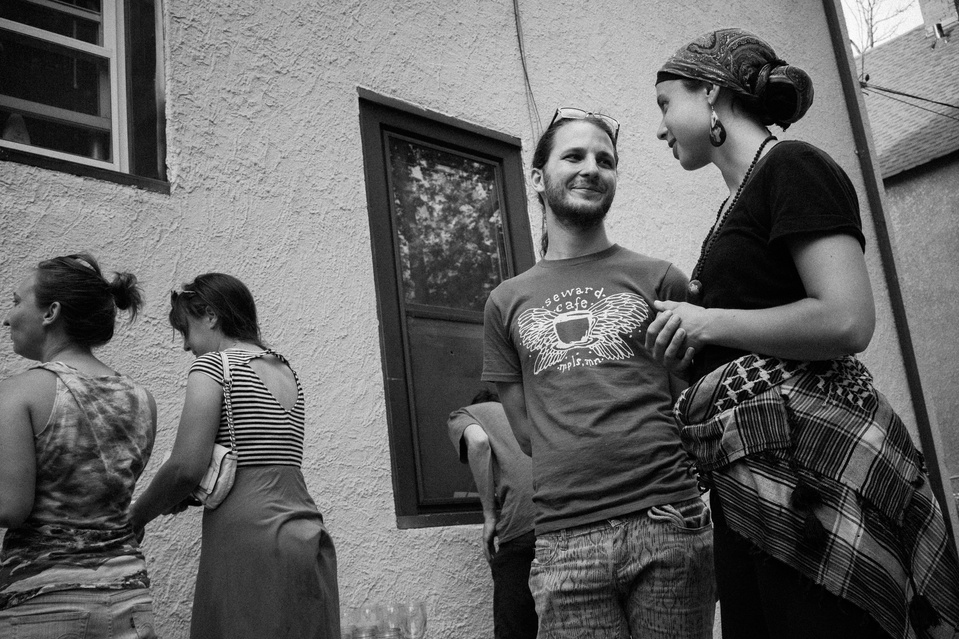
People mingle and enjoy dinner before the open mic starts.
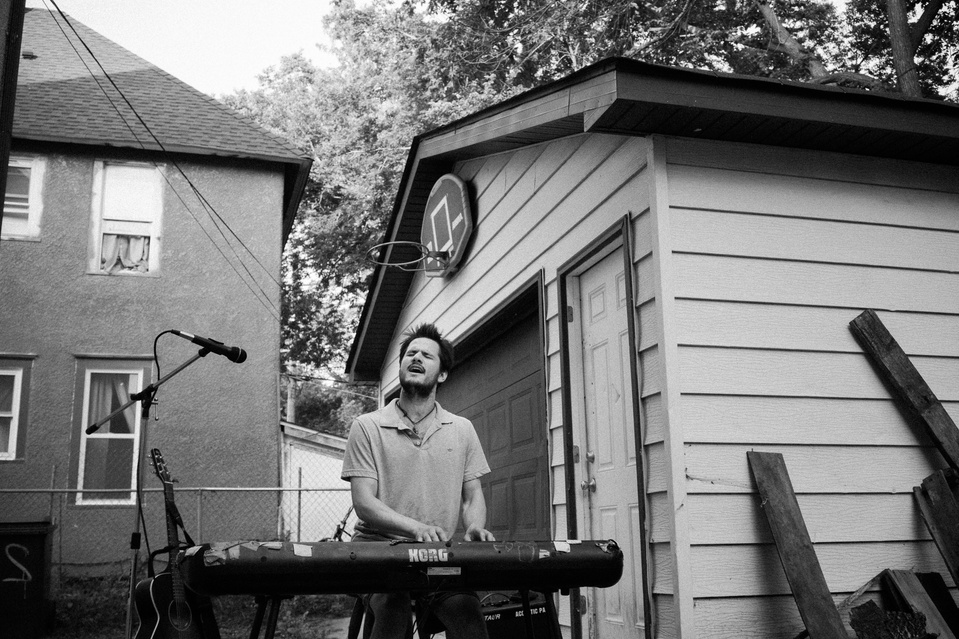
Benjamin sings a few songs and accompanies himself on piano.

Josie sings and plays some of her own pieces on guitar.

